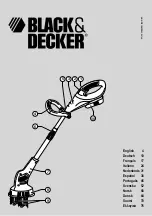
The TXV is set at the factory to maintain approximately
8 to 12° F (4.4 to 6.7° C) suction superheat leaving the cooler
by monitoring the proper amount of refrigerant into the cooler.
All TXVs are adjustable, but should not be adjusted unless
absolutely necessary. When TXV is used, thermistors T7 and
T8 are not required.
The TXV is designed to limit the cooler saturated suction
temperature to 55 F (12.8 C). This makes it possible for unit
to start at high cooler fluid temperatures without overload-
ing the compressor.
Sensors —
The Flotronic™ II chiller control system gath-
ers information from sensors to control the operation of the
chiller. The units use 6 standard pressure transducers and
4 standard thermistors to monitor system pressures and tem-
peratures at various points within the chiller. Sensors are listed
in Table 3.
Table 3 — Thermistor and Transducer Locations
THERMISTORS
Sensor
Location
T1
Cooler Leaving Fluid Temp
T2
Cooler Entering Fluid Temp
T7
Compressor Suction Gas Temp Circuit A
T8
Compressor Suction Gas Temp Circuit B
T10
Remote Temperature Sensor (Accessory)
PRESSURE TRANSDUCERS
Sensor
Location
DPT-A
Compressor A1 Discharge Pressure
SPT-A
Compressor A1 Suction Pressure
OPT-A
Compressor A1 Oil Pressure
DPT-B
Compressor B1 Discharge Pressure
SPT-B
Compressor B1 Suction Pressure
OPT-B
Compressor B1 Oil Pressure
Compressor Protection Control Module (CPCS)
—
Each compressor on models 30GN070 (50 Hz), 080-
110, and 230B-315B, has its own CPCS as standard equip-
ment. See Fig. 2. All 30GN040-060 and 070 (60 Hz) units
feature the CPCS as an accessory, and CR (control relay) as
standard equipment. The 30GN130-210 and associated modu-
lar units have a CR as standard equipment. The CPCS or CR
is used to control and protect the compressors and crankcase
heaters. The CPCS provides the following functions:
• compressor contactor control
• crankcase heater control
• compressor ground current protection
• status communication to processor board
• high-pressure protection
The CR provides all of the same functions as the CPCS
with the exception of compressor ground current protection.
Ground current protection is accomplished by using a CGF
(compressor ground fault module) in conjunction with the
CR. The CGF (See Fig. 3) provides the same ground fault
function as the CPCS for units where the CPCS is not
utilized.
One large relay is located on the CPCS board. This relay
(or CR) controls the crankcase heater and compressor
contactor. The CPCS also provides a set of signal contacts
that the microprocessor monitors to determine the operating
status of the compressor. If the processor board determines
that the compressor is not operating properly through the sig-
nal contacts, it will lock the compressor off by deenergizing
the proper 24-v control relay on the relay board. The
CPCS board contains logic that can detect if the current-to-
ground of any compressor winding exceeds 2.5 amps. If this
condition occurs, the CPCS module shuts down the
compressor.
A high-pressure switch with a trip pressure of 426
± 7 psig (2936 ± 48 kPa), is wired in series with the CPCS.
If this switch opens during operation, the compressor stops
and the failure is detected by the processor when the signal
contacts open. The compressor is locked off. If the lead com-
pressor in either circuit is shut down by the high-pressure
switch or ground current protector, all compressors in the
circuit are locked off.
OPERATION DATA
Capacity Control —
The control system cycles
compressor to give capacity control steps as shown in
Tables 4A-4C. The unit controls leaving chilled fluid tem-
perature. Entering fluid temperature is used by the micro-
processor in determining the optimum time to add or sub-
tract steps of capacity, but is not a control set point.
The chilled fluid temperature set point can be automati-
cally reset by the return temperature reset or space and
outdoor-air temperature reset features. It can also be reset
from an external 4 to 20 mA signal, or from a network
signal.
The operating sequences shown are some of many pos-
sible loading sequences for the control of the leaving fluid
temperature. If a circuit has more unloaders than another,
that circuit will always be the lead circuit.
Fig. 2 — Compressor Protection Control Module
Fig. 3 — Compressor Ground Fault Module
5
Содержание Flotronic II 30GN040
Страница 71: ......






































